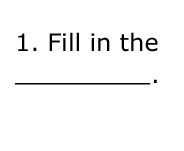I am now, officially, a huge fan of the blank.
A couple weeks ago, walking into school from my truck, I found myself carrying four wooden dowels of various lengths, two bags of large marshmallows, my lunch box with a one-liter water bottle clipped to it, four pieces of posterboard rolled together, a camera, a 13 gallon trashbag full of miniature terrain (very light, very bulky).
Although my total load was insignificant (maybe 10 lbs), as I did the one-finger pull to open the door and get into the building, it was clear that I was carrying about as much as I could in terms of bulk.
 |
| you must know nodwick |
I like to set some limits when it comes to how much players can have their characters haul around in my role-playing games, but assigning every piece of treasure or gear an encumbrance value and/or weight to track is way more granularity and record keeping than I'm up for in my recreation. Delta at Delta's D&D Hotspot has created a neat, thematic encumbrance system, and it's fine for gearing up at the start of an adventure, but really I want something that can allow players to quickly self-adjudicate in situations like ...
"I want to take a spear from the frog-guys"
"I want to carry the potion and the monkey-mace"
"If I drop my shield can I take the elf's bow now that he's dead?"
"Can I just bring the whole chest along?"

Dagger for Kids (Brave Halfling Publishing) has no system for tracking weight or encumbrance; the game is aiming for a much more minimalist style of play; so I had to find something I could live with that was rules-lite, intuitive, and self-managed.
I offer for your consideration ... _______________ ... the humble blank.
Want to carry an extra weapon?
That takes a blank.
Pack some rope along?
That's a blank too.
Find a sack of coins at the bottom of a chest?
Yup. A blank.
Each of my Dagger for Kids character sheets has six of these lovely blanks preprinted on them. Call them "equipment slots" or "inventory spaces" or whatever. My student-players know how to use them intuitively and don't even need to be told, "If you've filled them all then you can't carry anything else unless you drop something first."
 |
| . |
Using blanks -- inflexible, severe, and abstract as hit points -- adds a delightful layer to the dungeon-exploration game: we award experience for treasure successfully recovered from the dungeon only to the character actually carrying it. So, often as not, every valuable find requires players to choose between dropping a piece of gear to pick up loot, or keeping the tools they may need but passing up on the best source of experience points.
I like my student players to think about things like: "If I drop my lantern in exchange for a sack of coins, will our remaining torches last long enough to get us back out? Should I dump the iron spikes instead? What if we get chased by a monster and need to jam a door shut?"

As you may have guessed, my dungeons end up being littered with discarded gear -- for a reason -- which is awesome. Groups of explorers also find that they have to stash treasure in the dungeon with plans to return and recover it later, which can lead to the creation of player-generated cryptic notes and treasure maps!
Some items, like that big treasure chest, may require two or even three slots, while tiny items, like rings and broaches, don't require one. As a GM, I assign treasures both a value in gold pieces / experience points and a number of equipment slots that it occupies. This encourages evaluative thinking as players pick which items to carry along. Want to lug your friend's body out for proper burial? Better be ready to get rid of some gear to free up the three blanks you'll need.
 |
| . |
In this experience-for-treasure-carried, six-item-only approach, henchmen, linkboys, porters and other non-combatants take on a distinct value ("Squire, my mace!"). Since characters in Dagger for Kids don't have any ability scores (no strength or charisma stats for e.g.), I've toyed with the idea of using character level to determine a maximum number of retainers.
As an aside, in my middle school games, all standard starting equipment and weapons are "free" -- explorers are assumed to come from among members of a social class that can bear arms and risk exploring the underworld rather than spending their days laboring in the fields.
Here are some of the requests my last batch of middle schoolers made when thinking about their starting equipment:
"Can I have ...
a grappling hook?
a rope?
some dynamite?
a radio?
rope arrows, can I get some rope arrows?
a slab of meat, like a big steak?
a horse?
some matches?
an extra torch?
something that can burn ... some oil?
a bandage. If I put a bandage on does that give me back my hit points?
a katana -- it's NOT just a sword
a javelin or a spear
some antivenom
some kind of healing potion or something
some food -- does food heal wounds when you eat it?
an extra wand. If I have two wands does it let me cast an extra spell?"
 |
| lifted here |
Ah, a new generation of would-be power-gamers in the making!

No comments:
Post a Comment